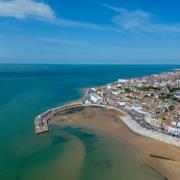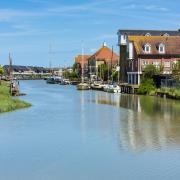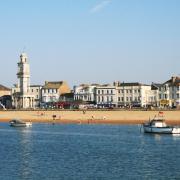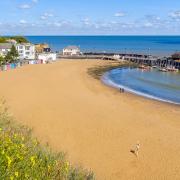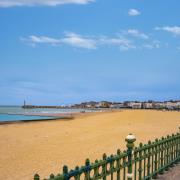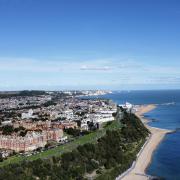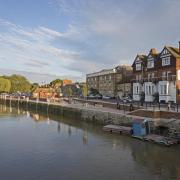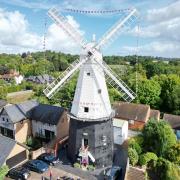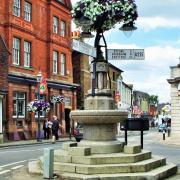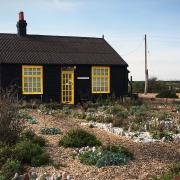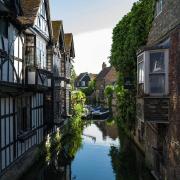This Thamesside town has some real surprises in store – including a huge Sikh temple and the resting place of a certain Native American princess

1. Creepy name
For a long time, a rumour persisted that Gravesend’s name came from its use as a burial ground during the plague. Having run out of space in London, it was said that bodies were sent along the river to mass graves. In fact, it goes back far further. Mentioned in the Domesday Book as Gravesham, the name is thought to have been derived from Grafs-ham or ‘place at the end of the grove’.
2. Famous princess
It’s more than 400 years since she stepped onto the shore at Gravesend, but the town has never forgotten Pocahontas. A Native American noblewoman who married an Englishman in the colonies, Pocahontas achieved such fame during her visit in 1617 that she was invited to socialise with royalty. But as they set sail to return to the Americas, she became ill and was brought ashore at Gravesend. She died in the town aged just 22. Visitors still gaze at her striking statue outside St George’s Church and if you take the time to look inside the church, you’ll be rewarded with two stained glass windows dedicated to her memory.
3. Maritime heritage
Gravesend was once one of the most important ports in England, given the sole rights to transporting passengers to and from London in the 14th century. During the 19th century, steamboats chugged up and down the river and thousands of immigrants disembarked in the town as the first port on the Thames. There’s a Kent Maritime Heritage Trail that stretches from Gravesend (it starts at the grave of Pocahontas) right through to Dungeness.
4. Oldest pier
Gravesend Town Pier is the oldest surviving cast-iron pier in the world, built in 1834. The refurbished pier head features a restaurant and the town’s passenger ferry across to Tilbury runs from a pontoon connected to it. Gravesend’s other pier was built in 1844 and is known as Royal Terrace Pier. The Port of London Authority bases its main operation centre here and it’s in constant use by river pilot vessels.

5. Fighting talk
For history lovers, Fort Gardens is not only a pretty green space but home to New Tavern Fort and Chantry Heritage Centre – where you can still see the old guns of this well-preserved artillery fort.
Designed to defend this valuable strategic position on the river, the original fort was built in the 18th century but was used up until the Second World War.
There is an extensive underground magazine complex with ammunition storage chambers and an exhibition on Gravesend during the war, which includes full-size bomb shelters. In the 1860s, famous military figure General Gordon of Khartoum was stationed at the fort and he spent his spare time helping local children living in poverty.
6. Regeneration
Like many of Kent’s towns, Gravesend has been earmarked for improvement and expansion. Formerly known as the Gravesend Heritage Quarter project, plans to regenerate part of the town centre have been broken into three proposed phases.
St George’s Phase 1 has already seen updates to St George’s shopping centre, while the second phase would include new housing, a hotel, restaurants, a cinema and community space around the setting of St George’s Church.
The proposal also includes the Market Square and Horn Yard site, which would see two town centre car parks developed for affordable housing. Of course, it remains to be seen if these will now go ahead.
7. Hot stuff
Strangely, when the UK basks in a heatwave it’s consistently Gravesend that records the highest temperatures. In 2018, the Met Office said there was no single reason why the area always topped the chart but that a number of factors were in play. For a start, the south east is the warmest part of the country and Gravesend is close to London, which is always a few degrees warmer than elsewhere. It also has a lot to do with the location of its particular weather station – the lowest in Greater London.
8. Beautiful temple
Gravesend has a large Sihk population and the Guru Nanak is a stunning place of worship. One of the UK’s biggest gurdwaras, and possibly one of the largest outside India, it was built in 2010 and has space for up to 1,200 worshippers. The complex has three prayer rooms and two community kitchens called langar halls.
9. Secret bunker
While Fort Gardens may be home to historic artillery guns, Gravesend’s Woodlands Park also hides a military past. Beneath the unassuming park is a secret underground bunker dating back to the Cold War. A civil defence command post built in 1954, the 13-room bunker would have been the local command centre in the event of a nuclear war.
Over the years it has been refurbished and authentically staged with a communication room, fallout room and a radiation monitoring post.
10. Literary links
Charles Dickens lived at Gad’s Hill Place in nearby Higham and mentions Gravesend in three of his novels. Most famously, in Great Expectations, Pip rows Magwitch down river from London with the intention of waylaying one of the regular steamers bound for Germany. It also appears in The Pickwick Papers, and in David Copperfield as the port from which Mr Peggotty, Ham and the Micawbers say their goodbyes and sail away for a new life in Australia. The town is also briefly mentioned in Mery Shelley’s Frankenstein during Victor’s travels, and in Joseph Conrad’s Heart of Darkness.




